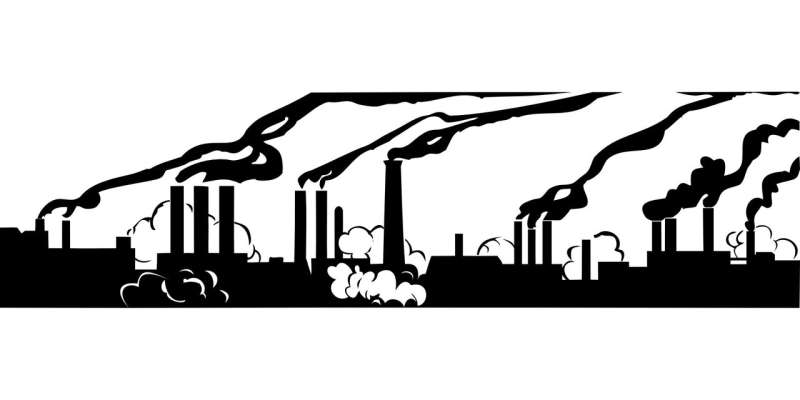Credit: CC0 Public Domain
Long-term exposure to high levels of air pollutants, especially fine particulate matter (PM2.5), appears to have a significant influence on outcomes for people hospitalised with COVID-19, according to a large, multicentre observational study being presented at the European Congress of Clinical Microbiology & Infectious Diseases (ECCMID) held online this year.
The greater the exposure, the greater the risk, researchers found. Each small (ug/m³) increase in long-term PM2.5 exposure was associated with more than three times the odds of being mechanically ventilated and twice the likelihood of a stay in ICU.
"Our study calls attention to the systemic inequalities that may have led to the stark differences in COVID-19 outcomes along racial and ethnic lines", says Dr. Anita Shallal from the Henry Ford Hospital in Detroit, U.S.. "Communities of colour are more likely to be located in areas closer to industrial pollution, and to work in businesses that expose them to air pollution".
According to the American Lung Association, Detroit is the 12th most polluted city in the U.S. measured by year-round fine particle pollution (PM2.5). Ambient air pollution—including potentially harmful pollutants such as PM2.5 and toxic gases emitted by industries, households, and vehicles—can enhance inflammation and oxidative stress in the respiratory system, exacerbating pre-existing lung disease. Air pollution has been linked with worse health outcomes, including increased risk of dying, from respiratory viruses like influenza.
To examine the association between air pollution and the severity of COVID-19 outcomes, researchers retrospectively analysed data from 2,038 adults with COVID-19 admitted to four large hospitals within the Henry Ford Health System between March 12 and April 24, 2020. Patients were followed until May 27, 2020.
The researchers collected data on where participants lived as well as data from the US Environmental Protection Agency and other sources on local levels of pollutants including PM2.5, ozone, and lead paint (percentage of houses built before 1960). They explored the association between COVID-19 outcomes and exposure to PM2.5, ozone, lead paint, traffic, hazardous waste, and waste water discharge.
They found that patients who were male, black, obese, or had more severe long-term health conditions were much more likely to be mechanically ventilated and admitted to the ICU. So too were patients living in areas with higher levels of PM2.5 and lead paint.
Even after accounting for potentially influential factors including age, BMI, and underlying health conditions, the analysis found that being male, obese, and having more severe long-term health conditions were a good predictor of dying following admission. Similarly, higher PM2.5 was an independent predictor for mechanical ventilation and ICU stay, but not a greater risk of dying from COVID-19.
"The key takeaway is that living in a more polluted neighbourhood is an independent risk factor for severity of COVID-19 disease", says Dr. Shallal. "Although it is not clear how air pollutants contribute to more severe disease, it's possible that long-term exposure to air pollution may impair the immune system, leading both to increased susceptibility to viruses and to more severe viral infections. In a double hit, fine particles in air pollution may also act as a carrier for the virus, increasing its spread. Urgent further research is needed to guide policy and environmental protection, to minimise the impact of COVID-19 in highly industrialised communities that are home to our most vulnerable residents."
The authors point out that their study was observational, so can't establish cause. They add that while they adjusted for several influential factors, it is still possible that other factors which could not be fully controlled for, including severity of disease at time of presentation, may contribute to the outcomes observed.
Provided by European Society of Clinical Microbiology and Infectious Diseases
























